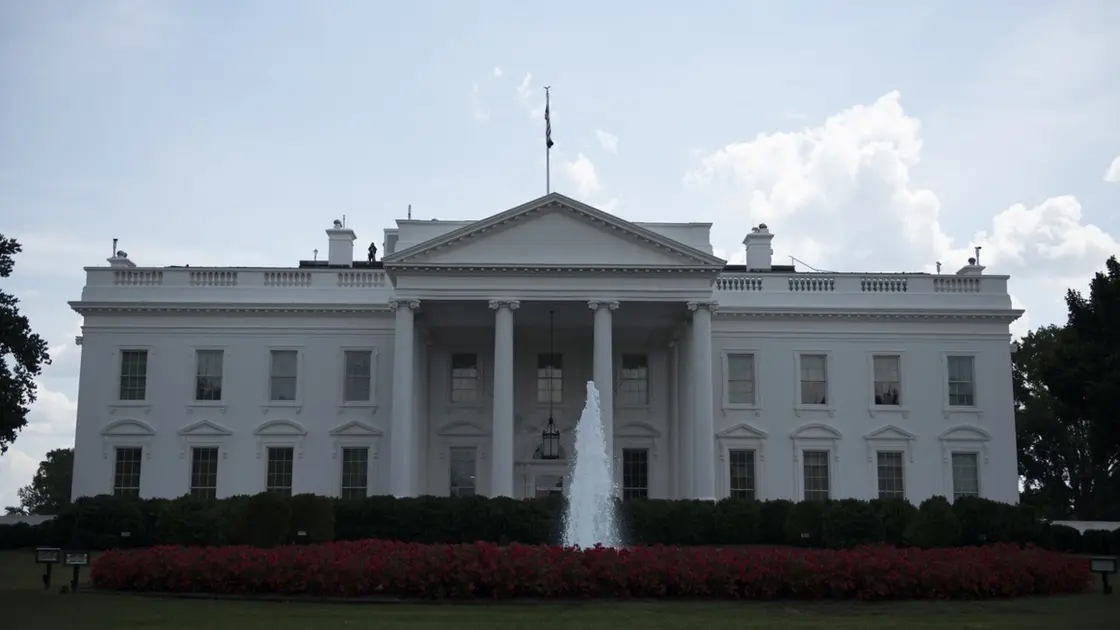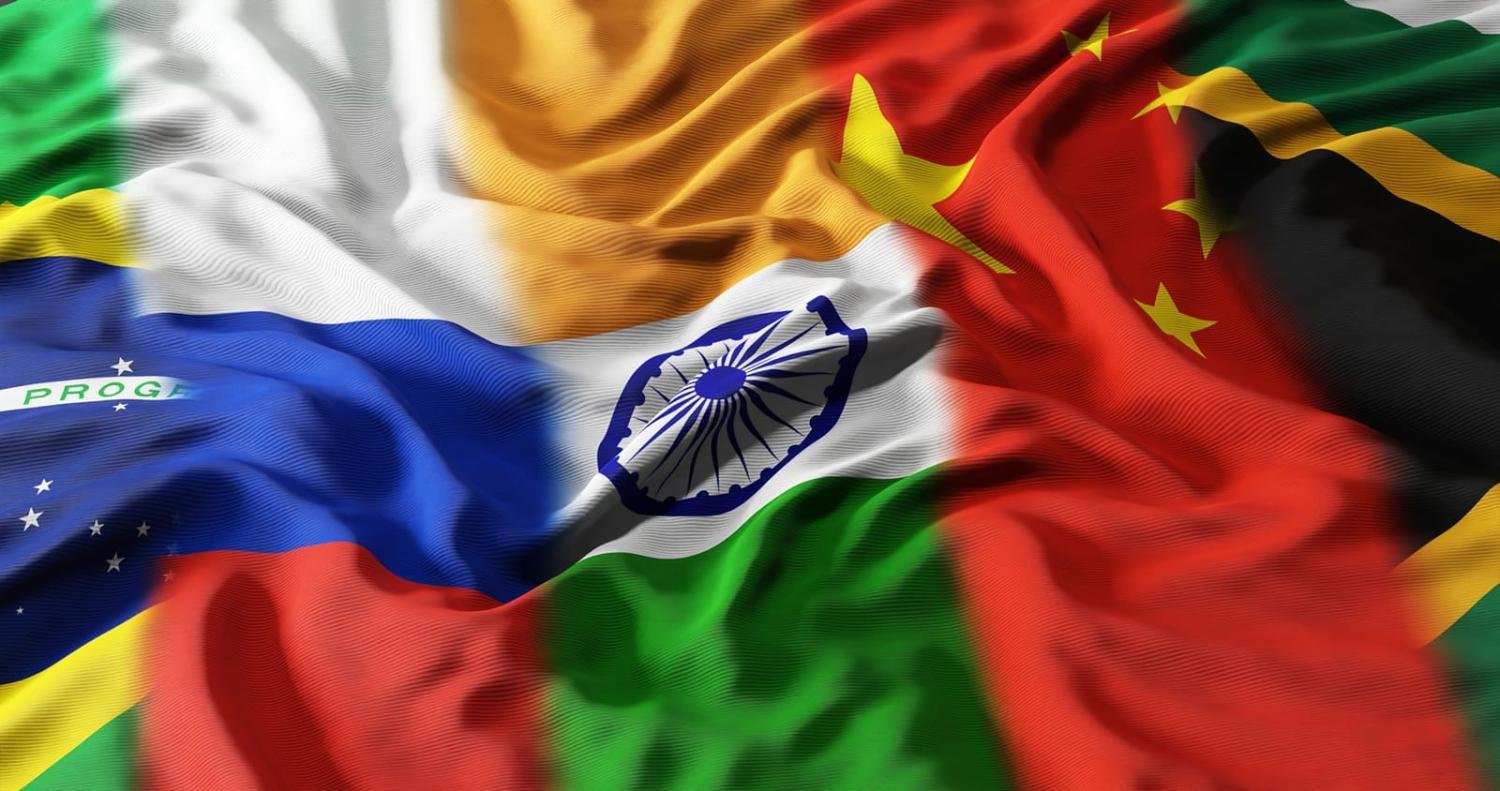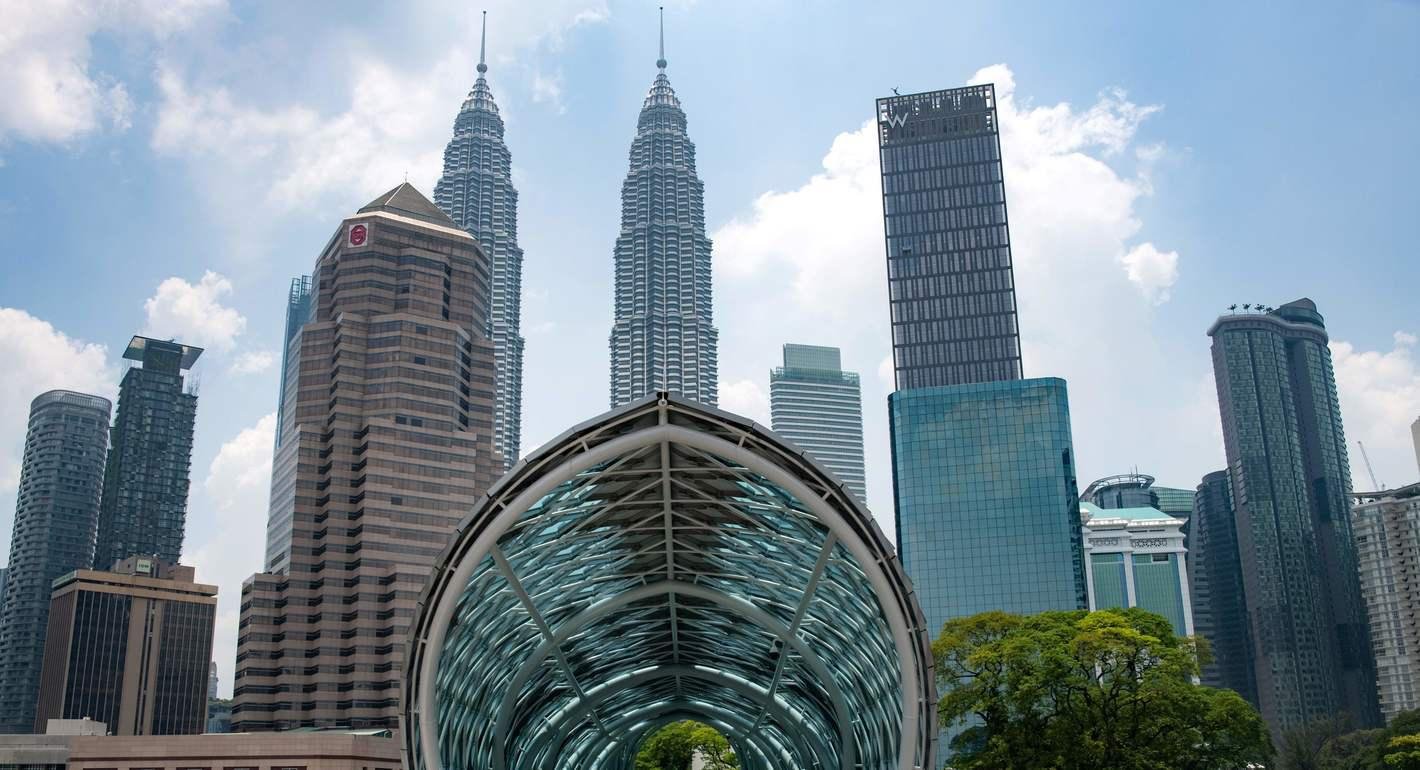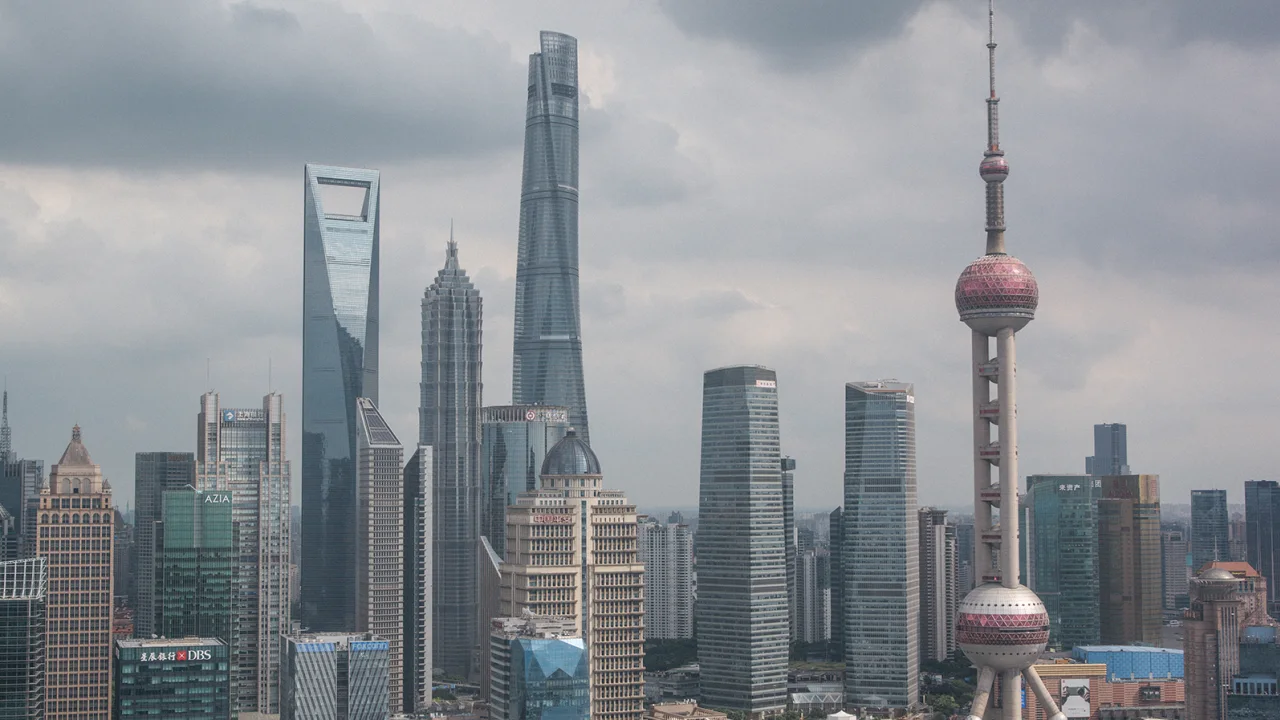Ngeow Chow Bing
Washington aims to convince Southeast Asian countries that U.S. military power in the region is benign, while Beijing aims to convince the region that its rise offers economic opportunities. Malaysia assesses both powers as having constructive roles to play.
This publication is a product of Carnegie China. For more work by Carnegie China, click here.
Southeast Asia is an important geopolitical arena where U.S.-China strategic competition is playing out intensely. Malaysia is one of the most crucial regional countries, as a founding member of the Association of Southeast Asian Nations (ASEAN) and a credible and active diplomatic actor. Like many other countries in the region, Malaysia faces the contending grand narratives fashioned by the United States and China. But it strives not to see these two narratives as completely zero-sum; it assesses both major powers as having constructive roles to play in the region but also sees gaps between each side’s rhetoric and the reality of their actions.
THE DUELING U.S. AND CHINESE NARRATIVES
China is the number one trading partner of most countries in Southeast Asia. It is also a significant source of investment, tourism, and other economic opportunities. For China, the economic importance of Southeast Asia has risen significantly as well. In 2020, ASEAN became China’s largest trading partner for the first time. As economic tensions grow between China and the United States, the European Union, Japan, and Taiwan, Southeast Asia has emerged as a crucial intermediary.
The United States, on the other hand, is often counted as the primary security provider in the region, particularly in the maritime domain, and it has substantial and growing economic relations with Southeast Asian countries. (It is the second-largest trading partner of ASEAN and the largest investor.) The United States has two treaty allies in the region—the Philippines and Thailand—and robust security partnerships with Indonesia, Malaysia, Singapore, and Vietnam. China’s forceful moves to assert its claims in the South China Sea have resulted in a growing sense of insecurity, anxiety, and vulnerability for many maritime Southeast Asian countries, and the United States is valued by many of them as a balancing force to check any potential Chinese military aggression.
Both the United States and China have incentives to secure the support, if not the full allegiance, of Southeast Asian countries. In this context, it is crucial for each country to shape a narrative or worldview that is congenial to its role, status, and aspirations in the region and to have its narrative accepted by regional leaders and the elite.
Washington aims to convince Southeast Asian countries that the preponderance of U.S. military power in the region is benign; that the United States is the key architect of and the leading power behind a stable order that has benefited the region in terms of peace and prosperity; and that it, together with allies and partners, is defending this order from being undermined by China. For its part, Beijing aims to convince Southeast Asian countries that China’s rising power is benign, that it provides ample economic opportunities for the region, and that it is not a threat and not trying to upend the existing international order.
These dueling narratives are well captured by the speeches offered by the countries’ respective defense chiefs at the 2023 Shangri-La Dialogue in Singapore. In his speech, U.S. Secretary of Defense Lloyd Austin underscored the “vision” of a “free, and open, and secure Indo-Pacific within a world of rules and rights . . . anchored in some key principles [such as] respect for sovereignty; adherence to international law; transparency and openness; the free flow of commerce and ideas; human rights and human dignity; and equal rights for all states, large and small.” He emphasized that “this vision isn’t the vision of a single country” but “a common and compelling aspiration” for all. The United States’ aspirational role is clear: it wants to work with partners to uphold this vision and “to deter aggression and to deepen the rules and norms that promote prosperity and prevent conflict.”
Contrasting with the United States’ normative “shared vision,” Chinese Defense Minister Li Shangfu highlighted the geographic nature of the “shared home” of Asia-Pacific countries. He decried the “resurging cold war mentality” that increases “security risks of block confrontation” and builds “exclusive military alliances against imagined threats.” He presented China as a defender of the status quo, saying that Beijing upholds “the international order underpinned by international law and basic norms governing international relations based on the purposes and principles of the UN Charter,” while arguing that some countries only have a “selective approach to rules and international laws.”
The general perception, especially within the West, is that the two sides’ dueling narratives are diametrically opposed to each other. But for countries such as Malaysia, these narratives do not inherently represent either-or choices. In fact, both narratives have appealing elements that resonate with Malaysia’s interests, values, and ideals. At the same time, Malaysia has no illusion that both narratives promote idealized images of the United States and China as benign actors and gloss over inconsistencies and self-serving interests.
MALAYSIA’S POSITION ON THE U.S. NARRATIVE OF THE LIBERAL INTERNATIONAL ORDER
Broadly speaking, the “shared vision” described by Austin is associated with a grander and more fundamental narrative, often known as the liberal international order. Although Malaysian leaders seldom use that term, they are cognizant of the fact that, since independence, Malaysia initially survived and then thrived within the order that was formed, shaped, maintained, and underpinned by Western liberal powers, particularly the United States. The order has commonly accepted rules, norms, and arrangements governing interstate behaviors that Malaysia broadly agrees with and subscribes to, such as economic openness and free trade, the UN system, respect for sovereignty and territorial integrity, and respect for international law. Malaysia also acknowledges that the United States has played perhaps the most vital role in sustaining the order, primarily through fostering economic openness and maintaining its network of regional alliances. Hence, by and large, Malaysia sees itself as a beneficiary of the liberal international order. On the other hand, Malaysia’s acceptance of such an order does not mean its views are completely aligned with the United States’ narrative.
First, Malaysia does not hold a static or even mystified understanding of the rules and norms that underpin the liberal international order. There are numerous cases where Malaysia and Western powers have different understandings of the supposedly commonly agreed rules and norms, especially those concerning trade, the environment, and human rights. In the maritime sphere, beyond the broad acceptance of the principle of the freedom of navigation, Malaysia disagrees with the United States about the extent of the application of this principle to military activities, as it considers unauthorized military activities in its exclusive economic zone as unlawful. Moreover, Malaysia believes that rules and norms are not static but should evolve as realities change; the interests of countries in the Global South should be taken into stronger consideration. The liberal international order narrative projects a dichotomy whereby countries that adhere to the rules and norms stand together against countries that are revisionist rule-breakers. But for Malaysia, the narrative tends to paper over countries’ differences concerning the rules and norms and exaggerate the challenges to these rules in practice.
Second, even for broadly accepted principles, Malaysia does not find that the West, or the United States, has been consistent in applying them. As Malaysian scholar Kuik Cheng-Chwee notes, “Malaysia, like many others in the Global South, does not think the West has a monopoly—let alone moral high ground—on these ideals. . . . When implementing supposedly universal rules or norms, the ‘liberal’ powers have been firm against other states but flexible when it comes to themselves.”
Third, Malaysia is very careful when it comes to the values assumption within the liberal international order narrative, particularly concerning democracy, freedom, and human rights. The liberal international order is not limited to the countries with liberal characteristics, but its proponents assume that countries within such order will more or less converge toward the liberal value preferences it represents. To be fair, the United States is sensitive to Southeast Asia’s political realities and refrains from emphasizing these values too much. Malaysia generally also supports the values of the liberal international order, but it understands them in a more abstract sense. It refuses to clearly define which countries or regimes are “liberal” enough to be considered acceptable members of this order. Countries are judged first and foremost by what they do externally toward other countries and within international organizations, and less so by the political systems they adopt internally. This does not mean that Malaysia is not supportive of democracy or is not concerned about blatant violations of human rights in other countries, but rather that Malaysia is sensitive to the potentially exclusionary and divisive implications of the explicit dichotomy of “democracy versus autocracy” within the liberal international order narrative.
Fourth, while it is a fact that the liberal international order has for decades been underpinned by the United States’ leadership and power, Malaysia does not necessarily conflate the two. For Malaysia, there is no definite correlation or causation between a particular power configuration and the acceptable rules and norms of the order. In Malaysia’s view, a transition from one leading power to another does not necessarily suggest the order is going to be undermined, nor is a different power configuration, such as a multipolarity, necessarily incompatible with the order. In fact, a multipolar world order combined with the liberal international order might be preferable to Kuala Lumpur. In this sense, while appreciative of the importance of the United States in sustaining liberal international order, Malaysia is not as invested in either the idea or the reality of permanent U.S. primacy.
MALAYSIA’S POSITION ON THE CHINESE NARRATIVE OF A COMMUNITY WITH A SHARED FUTURE
China’s narrative offers a different set of trade-offs for Malaysia. At one level, Malaysia seems to be more forthcoming in lending rhetorical support to the Chinese narrative. According to the Chinese readouts of Malaysian Prime Minister Anwar Ibrahim’s meetings with Chinese President Xi Jinping and Premier Li Qiang during his April 2023 visit to China, the prime minister endorsed the grand narrative of the Chinese leadership—“a community with a shared future.” The readouts also noted Anwar’s support for other major Chinese diplomatic lexicons, such as the Global Development Initiative, the Global Security Initiative, and the Global Civilization Initiative. The Malaysian readout was a bit reserved but also stated that “Prime Minister Anwar expressed support for the principles and values of President Xi Jinping’s global initiatives and his vision of a Community for a Shared future for Mankind, including the proposal for a Malaysia–China Community for a Shared Future.” In addition, Anwar recommitted Malaysia’s support for China’s Belt and Road Initiative and seemed to agree with some standard Chinese formulations: the Chinese readout from the Xi meeting stated that “Malaysia rejects bloc confrontation and opposes being forced to pick sides.”
Both Xi and Li also set the importance of China-Malaysia relations within the context of China’s view of Asian countries’ “shared home” (the same analogy used by Defense Minister Li in Singapore), underscoring an important element of the Chinese narrative. China seeks to prioritize and elevate the interests of countries within its region over those of “external powers,” a term China often uses to refer to the United States, implying that these external powers have a tendency to cause troubles and sow divisions. The narrative also stresses that countries within the neighborhood are obliged to preserve harmony, which is fundamentally about the mutual respect of each other’s core interests. To China, rules and norms are also important in buttressing neighborhood harmony, but they are secondary to the principle of mutual accommodation, which requires states to emphasize cooperation while managing any differences with prudence and dialogue. This conception of the mutual obligations within the neighborhood is consistent with China’s larger narrative of a community with a shared future, where the intertwined interests and destinies of all countries oblige each not to seek confrontation and to forge win-win solutions for all.
Putting all these elements together, Malaysia so far does not see the Chinese narrative purely on ominous terms or believe that it has a lot of incompatibilities with Kuala Lumpur’s own interests and values. For instance, Beijing’s rhetoric of safeguarding the harmony of the shared home has some resonance in Malaysia, which in its own diplomatic history has had a penchant to emphasize regional visions and solutions (as seen in its various strategic or economic proposals including the Zone of Peace, Freedom and Neutrality (ZOPFAN) in the 1970s and the East Asian Economic Caucus (EAEC) in the 1990s). Even Malaysia’s recent discomfort with the security arrangement known as AUKUS between Australia, the United Kingdom, and the United States is partly reflective of its preference for a regional solution to regional security issues.
Likewise, while China’s Global Development Initiative and Belt and Road Initiative do not necessarily conform to international rules and norms for investment, financing, and aid, especially when measured by the so-called high standards practiced by Western countries, Malaysia believes it is an exaggeration to suggest that China’s initiatives will upend the established rules-based order. Moreover, these initiatives will likely evolve, and they can be harnessed and improved by both China and the participating countries to address countries’ developmental problems and weaknesses. The ideas of the Global Security Initiative, such as the vision of “common, comprehensive, cooperative and developmental security” are ideas that Malaysia broadly does not disagree with; in fact, many of them reflect Malaysia’s own thoughts about security. To quote Kuik,
“Malaysian elites believe that power competition breeds action/reaction, and heightening power action/reaction will precipitate a systemic security dilemma: a big power’s pursuit on a global scale of its own ‘absolute security’ creates absolute insecurity for other states, because when another power is targeted, contained or pushed into a corner, the latter’s countermeasures will add to vicious cycles of deepening distrust and tensions, accelerating crisis and pushing all parties closer to an unwanted conflict.”
This is quite similar to what China calls for: its narrative prioritizes “taking the legitimate security concerns of all countries seriously” and notes that the “security of one country should not come at the expense of that of others.”
While not opposed to the Chinese narrative, Malaysia also has reservations with particular aspects or will have concerns if China pushes certain initiatives to their fullest extent. While Malaysia shares with China the emphasis on regional solutions, Kuala Lumpur does not always agree with the way Beijing portrays so-called external powers and accords these powers more legitimacy to have a presence in Southeast Asia. Malaysia is equally wary of the emphasis of a shared-home narrative leading to an exclusive, China-dominated sphere of influence.
Second, despite its apparent acceptance of the Global Security Initiative, Malaysia understands the role of the U.S.-led alliance system somewhat differently than China does. Although the Global Security Initiative’s concept paper does not explicitly say so, and the document does not mention anything about the U.S.-led alliance system, the implications of China’s security vision are clear. China presents the U.S.-led alliance system as rather anachronistic, serving the purpose of maintaining and justifying U.S. hegemony and creating imagined threats and enemies. Malaysia will not be comfortable if the Global Security Initiative is meant to fully delegitimize the U.S.-led alliance system. Although it is not a member of the alliance system and at times has its own misgivings about the system, Malaysia appreciates that the system has provided a stable foundation for maintaining regional geopolitical stability for decades.
Finally, perhaps Malaysia’s most crucial disagreement with China is not about the narrative itself but about the gap between rhetoric and reality. China is as capable of exercising double standards as Western powers. In the South China Sea, for instance, China has failed to understand that its actions are causing security concerns among many littoral states in Southeast Asia, driving the states toward stronger defense and security cooperation with the United States and other so-called external powers. China often ignores that neighborhood harmony can be undermined and disturbed from within as much as from without.
CONCLUSION
Malaysia, like other countries in Southeast Asia, is carefully walking the tightrope between the United States and China and finds itself on the receiving end of the two powers’ dueling narratives. The United States projects itself as the defender of values, rules, and norms (encapsulated in the narrative of the liberal international order) against revisionist challengers. Malaysia has survived and thrived as a part of this order since its independence, and it no doubt wishes to preserve the order. But it also has some divergent views. Malaysia believes that the liberal international order is not perfect and that there are areas where improvements can and should take place. China’s narrative, on the other hand, emphasizes common interests, neighborhood harmony, and shared destiny. Overall, Malaysia does not see this narrative as negative or menacing like the West does, and it does not see the narrative as incompatible with the existing order. In Malaysia’s view, both narratives are actually (or potentially) complementary in certain aspects. However, Kuala Lumpur will not agree with Beijing if the end result is China’s hegemony in the Asia-Pacific.
For both the United States and China, a more consistent approach in applying the lofty principles propagated by their narratives, and the reduction of the gap between rhetoric and reality, is very much needed. The United States should appreciate that not all countries understand the rules and norms the way the United States does. It should therefore create more space for countries with divergent views and interests to shape the existing order. China should understand that countries within the shared home of the Asia-Pacific agree with the objective of maintaining regional peace and security. However, many countries have a different diagnosis from China of why regional peace and security is being undermined, and it is not necessarily due to the interference of so-called outside powers. Many countries, in fact, prefer and value a robust presence for the United States and other so-called external powers in the neighborhood.
Narratives shape perception and play a role in guiding the formulation of state policy and strategy. Malaysia’s refusal to accept both grand narratives at face value, in either-or terms, affords its leaders the space to formulate policies aimed at maintaining cordial ties with both the United States and China and helps ensure its nonaligned stance. Malaysia does not want to be caught in a grand narrative trap, where its foreign policy actions have to be guided by a grandiose frame at the expense of flexibility, pragmatism, and even its national interests. Given the intensifying rivalry between the United States and China, this balancing act will likely continue to be Malaysia’s preferred position.
(Source: Carnegie Endowment for International Peace)














